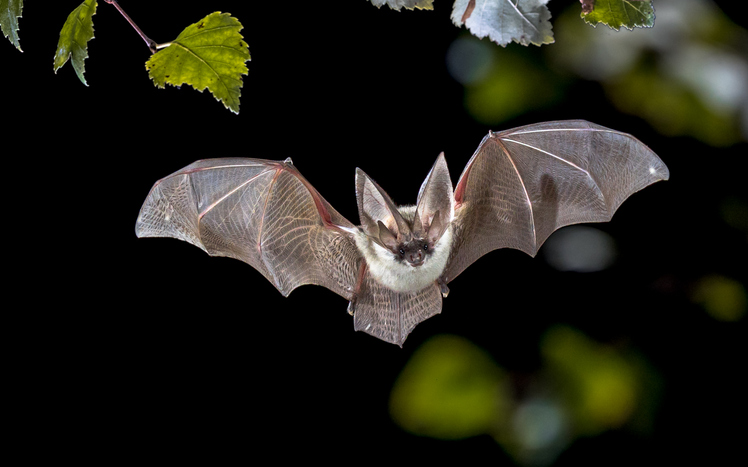Health department encourages sealing off home from bats
Getty Images
Flying bat hunting in forest. The grey long-eared bat (Plecotus austriacus) is a fairly large European bat. It has distinctive ears, long and with a distinctive fold. It hunts above woodland, often by day, and mostly for moths.
November 3, 2021
What to know
- Two rabies-infected bats have been found in DeKalb since September.
- The DeKalb County Health Department recommends ensuring that there are no outside openings for bats to get into your living space.
- The DCHD encourages anyone who has come into contact with a potentially rabies-infected animal to seek immediate medical care.
- Pet owners are encouraged to ensure that their pets’ rabies vaccines are up to date.
DeKALB — The DeKalb County Health Department confirmed that two rabies-positive bats that were found in DeKalb and Sycamore since September are not outside the normal range.
A rabies-positive bat was found in a home in Hinckley on Sept. 20, and a pet dog found a rabies-positive bat in Sycamore on Oct. 9. The dog was fully vaccinated and was able to receive a rabies booster following its contact with the bat.
Greg Maurice, director of health protection for the DeKalb County Health Department, said that two cases of rabies in two months is not outside the anticipated amount but still encouraged DeKalb community members to take precautions.
“Overall, I would say it’s about (the number of rabies cases) we would expect for the area,” Maurice said. “It does vary from year to year and season to season a bit, but this is within the norm.”
Maurice clarified that although bats are the most common carrier of rabies in Illinois, rabies-infected bats are not especially common.
“Out of maybe 50 to 78 (bats) a year that would meet the criteria for testing, there’s one or two that may be positive in that timeframe,” Maurice said.
Maurice encouraged residents to ensure that their homes are well sealed to the outside to prevent bats from getting into living spaces.
“Make sure that the home windows that would be open have a screen on them that are tight fitting; make sure they don’t have any opening from the outside,” Maurice said. “Work with either an apartment manager, or work yourself to close up those holes so there’s no access back into the home.”
Maurice also explained how residents should react if there is a bat in their living space and if they come into contact with a potentially infected animal.
“If they find one inside of the home, they should try to kind of contain it,” Maurice said. “If they see it in a room. Close the door. Put a towel underneath the door so the bat cannot get out.”
Maurice said that once the bat is contained, to contact animal control to safely remove it and to determine whether or not there was a potential rabies exposure.
“The biggest thing I would say is if they see the bat in that living area would be to not just ‘shoo’ it outside or move outside, because we want the health department or animal control to speak with them just to make sure that there’s no potential exposure.” Maurice said.
Maurice also encouraged community members to vaccinate their pets for rabies, as an unvaccinated pet exposed to rabies would have to be quarantined and potentially euthanized.
Maurice emphasized the importance of seeking immediate medical treatment when exposed to rabies, as well as getting ahold of animal control.
“Basically, they want to get the wound cleaned out and a medical opinion of what else has to happen at that time,” Maurice said.
Those who are potentially exposed should also contact animal control so that they can get more information about the animal and exposure.
Maurice explained that if someone exposed to rabies does not receive the post-exposure prophylaxis rabies vaccine, then they are at risk of fatally contracting it.
“Rabies is fatal in humans and also dogs,” Maurice said. “So they definitely need to be mindful of following through with medical care.”







